“Nihil difficile volenti’: this Latin aphorism, which translates as ‘nothing is difficult for the one who wants it, could be used to describe the philosophy behind the legendary ‘3500 GT’ model produced by Maserati, the famous car company founded in Bologna in 1914 by Alfieri Maserati and two of his brothers.
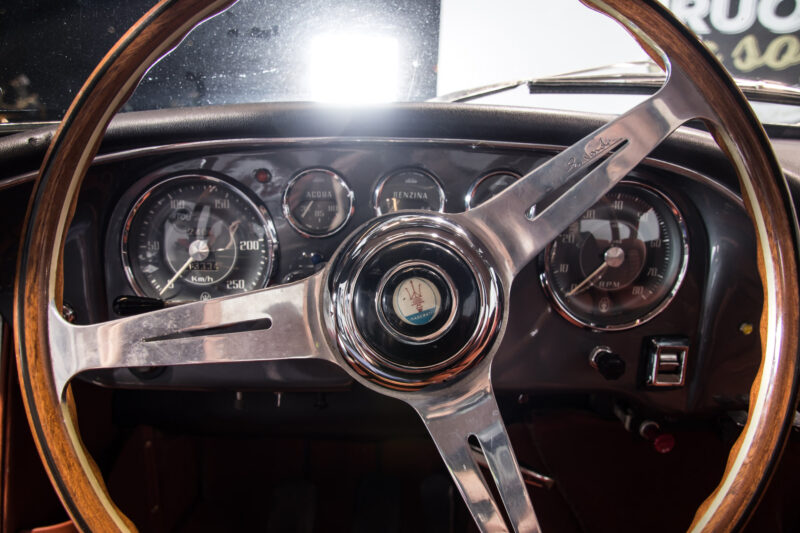
The war had been over for a few years, and Italy was heading for an economic boom that would affect all production sectors. Thanks also to the development of the national road and motorway network, cars were becoming widely available. Standardisation of production processes was required to meet the growing demand, especially for the so-called “utility cars”. However, the latter requirement was also adopted by Maserati for the production of high-end (“GranTurismo”) cars, in which the company specialised with the stylised trident, a trademark taken from a detail of Bologna’s Neptune Fountain. The aim, which was audacious for the period, was to increase production from two cars a month to two a day while maintaining, if not increasing, the characteristics of luxury, comfort and reliability. From 1957 to 1964, 2250 cars were produced.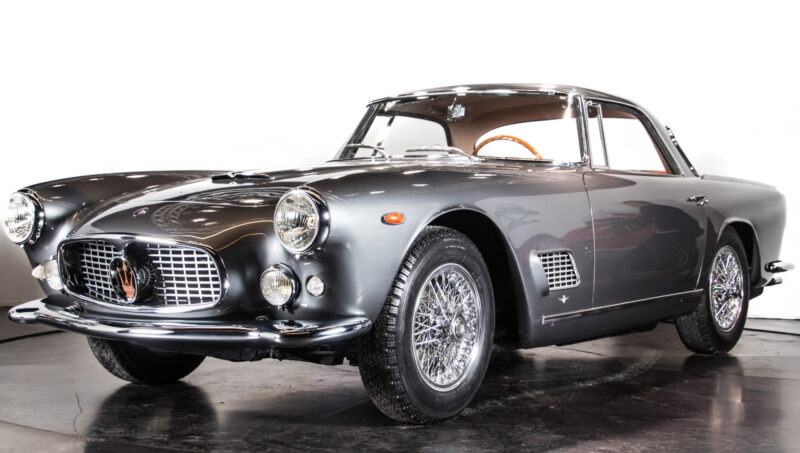
The steel body of the ‘3500 GT’, with aluminium doors and bonnets, was produced by the Milanese company ‘Carrozzeria Touring’ and featured an exquisite line, dominated by attention to every small detail. In addition, the traditional possibility of personalising the vehicle and the standard equipment, which was already dedicated to luxury, was revived. Leather upholstery, Jaeger instrumentation and two innovations that we now naturally consider part of the car but which, in those days, were deemed to be futuristic: air conditioning and electric windows were fitted as standard. After all, Maserati’s target market was a long-distance driver who needed to arrive at his destination quickly but without overdoing it, pampered by precious and comfortable accessories. This explains the 80-litre fuel tank, which reduces refuelling stops to a minimum. Young couples were also catered for, with space available at the rear for two children.
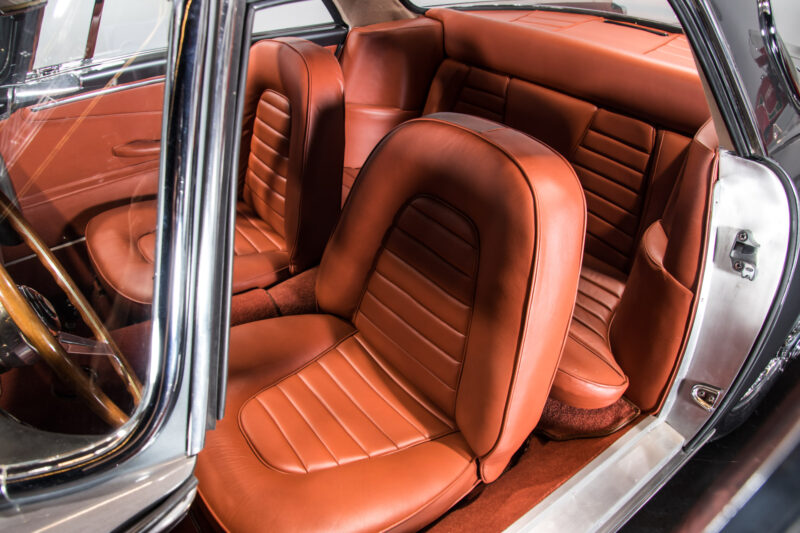
On the engine side, the 3500 GT was powered by a 6-cylinder in-line engine with a twin camshaft and a maximum output of 230 hp. Nominal displacement was 3,500 cm³, and the engine was fitted with three of Weber’s famous twin-body carburettors. The engine, designed by Giulio Alfieri, was the same, albeit downsized, as the Maserati 350 S racing car. To divert resources from the racing sector, Maserati opted for a courageous and, perhaps, unscrupulous choice for those times. It was decided to buy the best mechanical and accessory parts for the cars they produced from the most famous European companies and to assemble them in-house: this was the case for the brakes, steering, clutch and Weber “pots”.
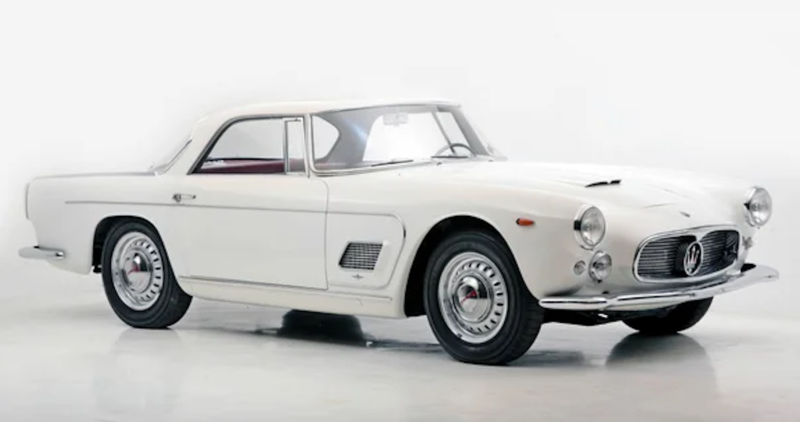
In terms of the ‘3500 GT’s aesthetic appearance, its line seemed to conform to the prevailing style of car design at the time, but, in reality, it retained the original and captivating physiognomy that made its fortune. The majestic and elegant nose, embellished with round headlights and chrome details. The sharp and light rear end, the slender and straightforward sides with two coquettish side air intakes, and the back fins all contributed to the creation of the legend, which became even more widespread when production ceased in 1964.
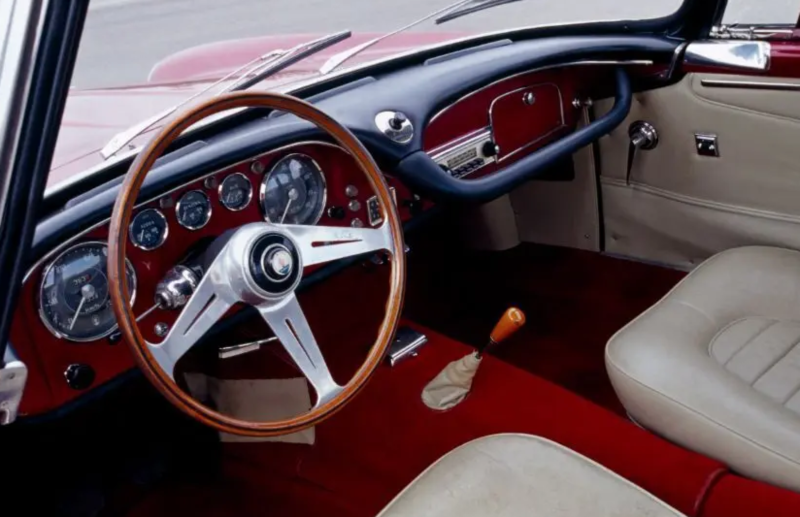
The curvy metal surfaces, the powerful engine, and the wide range of accessories designed for driver and passenger comfort meant that the car was not inconsiderable 1420 kilograms. Yet the power of the Maserati 3500 GT, coupled with its evident aerodynamics, allowed it to reach a top speed of 220 kph, placing it in the ranks of the top cars.
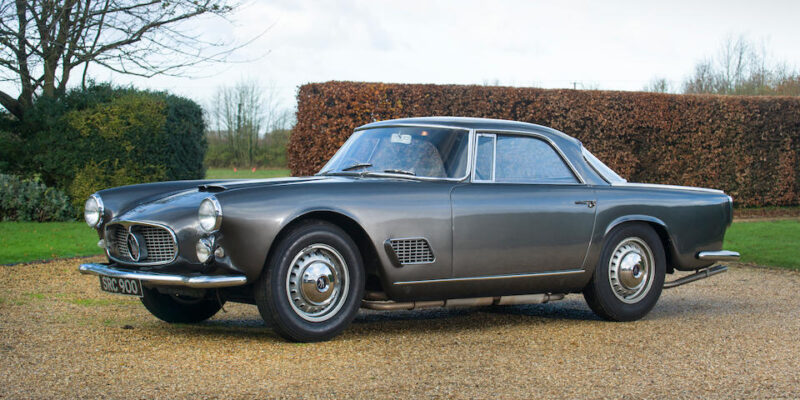
The quest for perfection, an endeavour on which the most outstanding philosophers since time immemorial have grappled, reached its peak in the final stage of production. Created the engine, bodywork and accessories through a purely industrial process. The 3500 GT’s first wailing could only take place after the most human of checks: mechanics auscultated the sounds of the engine and bodywork with a stethoscope, trying to find the wrong note in the symphony conducted by Italian Maserati.
Article edit by Roberto Castellucci

